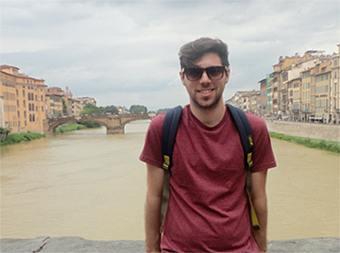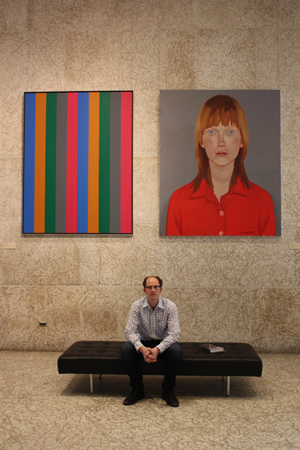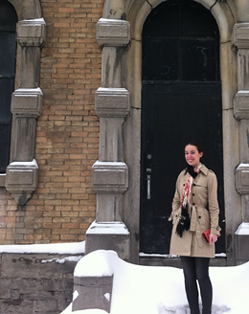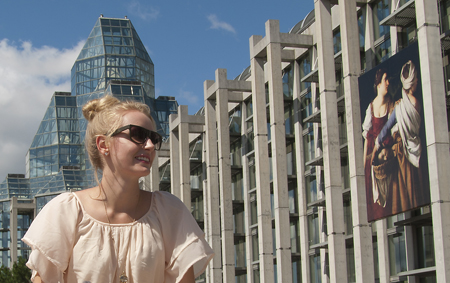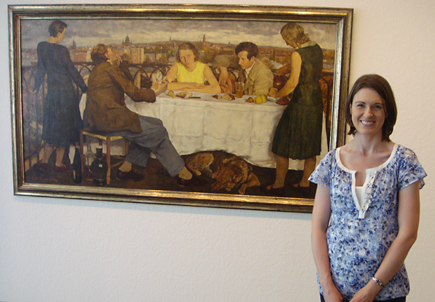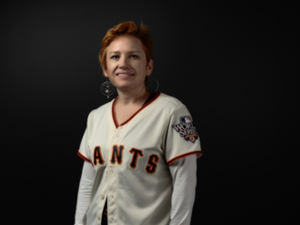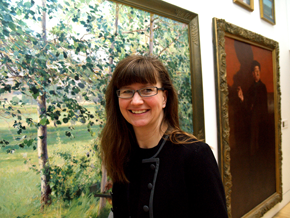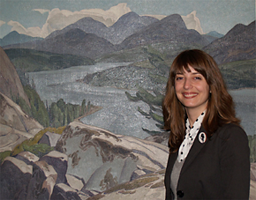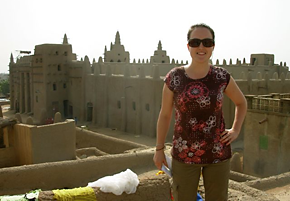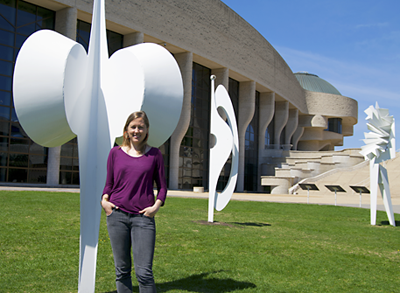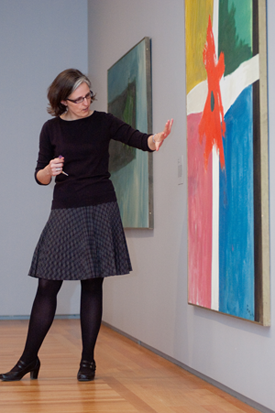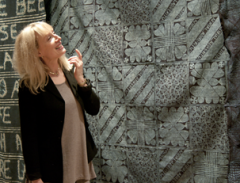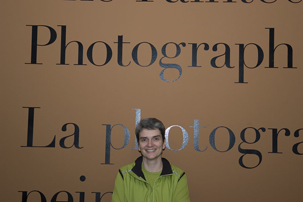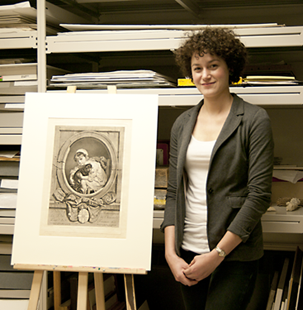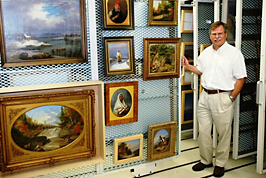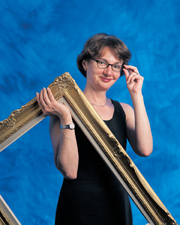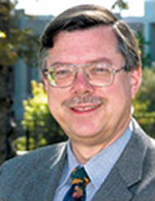What Our Students Say About Art History
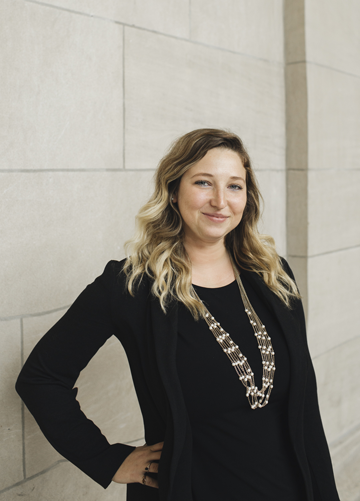
Pursuing my MA in Art History at Carleton University opened up so many doors for academic and professional advancement. Carleton offered relevant and engaging coursework, valuable networking opportunities, academic mentorship, and a supportive community. The practicum program was especially useful in connecting me with institutions in Ottawa. These networking opportunities were critical in developing my resume and building professional relationships.
After graduating, I worked at the National Gallery of Canada in the Technical Services, Collections Management, and Conservation departments. I then worked as a Program Officer for the Canada Travelling Exhibitions Indemnification Program with the Department of Canadian Heritage. Afterwards, I moved to Vancouver to take a position as a Registrar at the Vancouver Art Gallery and then worked as the Registrar for the Morris and Helen Belkin Art Gallery at UBC. I am pleased to say that I am now working at the Art Gallery of Ontario as a Project Manager of Exhibitions.
As a PM at the AGO, I develop strategies, budgets, and schedules to lead the production of multiple exhibitions from conception to realization. I work closely with curatorial, design, registration, interpretive planning, marketing, visitor services, and logistics to facilitate workflow and ensure milestones are met. I coordinate with departments across the gallery and liaise with artists and partnering institutions to ensure the highest quality presentations that reflect the AGO’s mission, vision, and values. My studies in Art History helped to equip me with the tools I need to succeed in my current role and I am very proud to be a Carleton alumnus.
Kristyn Rolanty
MA in Art History
While a student at Carleton University, I had the privilege of working at the Carleton University Art Gallery for the wonderful Sandra Dyck. I credit not only my time in the Art History program as inspiration for my career choice, but my experience working at the gallery. It opened doors to me—both inspirationally and professionally. I am currently the Associate Curator/Curator of the Thomas Bouckley Collection at The Robert McLaughlin Gallery (RMG) in Oshawa, Ontario, where I’ve worked since 2008. In 2012, I was a Curatorial Consultant for the Lindsay Gallery, advising them on best practices for collections management and copyright. Prior to the RMG I worked for a private art dealer in Toronto, as well as the Canadian Heritage Information Network. Following the completion of my Honours BA at Carleton University (2000-2004), I completed a post-graduate certificate in Museum Management and Curatorship at Fleming College (2005-2006). To date, I have curated over 35 exhibitions, included the travelling exhibitions The lingering: Toni Hamel and Jay Dart: Greetings from Yawnder! (upcoming).
Sonya Jones
Honours BA Art History
As a government records archivist working at Library and Archives Canada (LAC), I regularly use the skills that I developed and honed as a graduate student of the art history program at Carleton University, including critical thinking, research abilities and communication skills. My interest in archival work began when I decided to conduct my MA thesis research on an important photographic collection housed at LAC – the Topley Studio fonds. Thanks to my supervisor, Dr. Carol Payne, I was placed in the institution as a practicum student to add and enhance descriptive records of photographs in the database. During this practicum, I learned how to properly handle and describe photographic material, including glass plate and nitrate negatives. I also developed my knowledge of archival theories and principals at this time. This practicum eventually led to a job offer as an archivist upon graduation, which I gladly accepted! I am currently co-responsible for government photographic collections at LAC and am continually learning more about the appraisal, arrangement, description and preservation of archival photographs.
Emma Hamilton-Hobbs
MA in Art History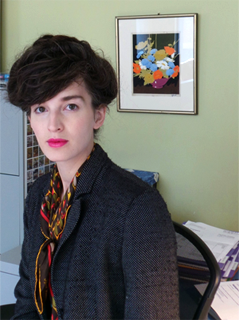
I came into Carleton’s Masters of Art History Program already having worked within public institutions and organizations in the Toronto area for over two years. Carleton University was the perfect place to pursue my studies. The location and reputation of the school permitted for internship opportunities in the National arts institutions. I am also pleased to have been the first Masters student to have graduated from the coursework stream, which was introduced in 2011. Looking to continue my career within the realm of Collections Management, I wanted my knowledge base to remain diverse: spanning across topics in Historical and Contemporary Canadian Art. The breadth of knowledge that I gained at Carleton is invaluable to my job.
Erin Rutherford
MA in Art History
Erin Rutherford, Collection Development Librarian, Edward P. Taylor Library & Archives, Art Gallery of Ontario
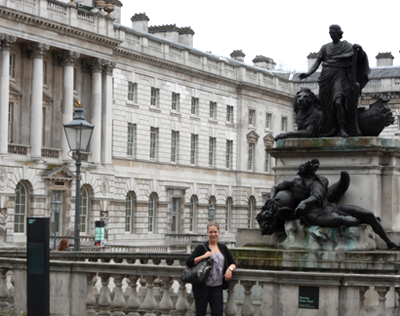
I chose to study in Ottawa because of the access to great collections like the National Gallery, and I chose Carleton because of its warm and welcoming atmosphere. The Art History program at Carleton is more than just a faculty, it’s a community. St. Pat’s building became my home away from home during my four years of study, and it was hard to say goodbye! The small size of the program means that you quickly get to know your Professors and they play a very active role in your academic development. The fourth-year practicum program gave me a chance to get my foot in the door working at SAW Gallery, and see first hand the application of an art history education. The variety of classes Carleton offers allowed me to pursue my own interests, and challenge myself by enrolling in BA classes that were mixed with MA students. This exposure to MA-level learning prepared me for my current role as an MA candidate at The Courtauld Institute of Art in London, England. As I embark on this next step, I’m proud to say I graduated from Carleton, and confident that my years there have given me all the tools I need to succeed in the future!
Virginia Carney
Honours BA Art History, Carleton University.
MA Art History Candidate, Courtauld Institute of Art
Moving to Ottawa from the East Coast was a big change, but it opened the door for many enriching and amazing educational and personal experiences. In the summer of 2012 I had the opportunity to become a summer guide on Parliament Hill. As a guide, I welcomed visitors, interpreted information and led groups of the general public through the building. Prior to working as a Parliamentary guide, I worked overseas, in France, as a Guide as well.
These experiences guiding allowed for exposure to many groups of varying cultures and backgrounds, which helped solidify my ability to interpret and disseminate information clearly and concisely. This led to a deep appreciation of art and architecture, which has grown exponentially as my education has exposed me to more and more in those fields. When I discovered Carleton’s Art History program, I was fascinated to find a program that covered my interests and seemed almost catered to them. This type of program is not available in the Maritimes, and once I started classes I absolutely fell in love with program and with the curriculum. An aspect that I find particularly rewarding is the opportunity to combine my personal knowledge and experience with skills and knowledge learned in the program. I apply subject matter covered in class to my job as a Guide, and I have learned to see the art and architecture in a whole new light. The intimate structure of the program allowed me to create meaningful relationships with the professors. Their guidance has helped me to explore all of the potential career paths in the Art History field. I don’t think that my academic and personal experiences would be anywhere as rewarding or even possible in another city or at a different institution.
Rebecca Muise
3rd year Honours B.A. in Art History
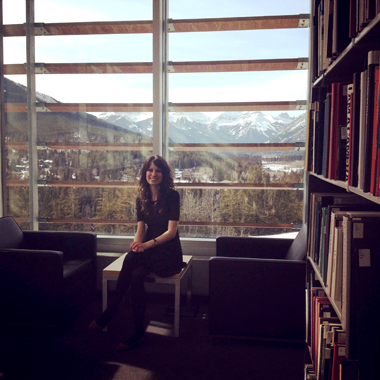
Upon transferring to Carleton in 2011, my academic and personal life flourished. Art history students at Carleton become a close-knit and supportive community, and the department is full of engaging and inspiring professors who challenge their students to think critically about what they are learning and encourage new ways of understanding works of art. Courses available in art history are also very wide-ranging, so there is a lot of flexibility to pursue a preferred area of interest.
In my own undergraduate experience, I am a huge advocate of art history’s practicum program. As an aspiring art librarian, I had the opportunity to intern at the library and archives of the National Gallery of Canada and at Carleton’s MacOdrum Library. The practical and professional practice I gained during these placements, complemented by a breadth of coursework and seminars, prepared me for my current position as Library Clerk at the Banff Centre Art Library & Archives. The Banff Centre is an internationally renowned institution and the collection housed at the library is quite extensive. The knowledge and experience I gained at Carleton has been invaluable in many of my current duties, such as helping artists or musicians find materials for their projects or engaging with the collection to create weekly themed displays for the public to enjoy. Each day I am learning something new about the artists in residence at the Banff Centre, and mapping connections with what I learned when I was at Carleton. Carleton’s Art History program enriched my passion for the field, helped me attain my current position at the Banff Centre, and will allow me to pursue in the near future a Masters in Library Science.
Jenna Dufour
BA (Hons.) Art History, 2013
Library Clerk, Paul D. Fleck Library & Archives, The Banff Centre

As Interim Manager of ART Rental and Sales at the Ottawa Art Gallery I am in constant contact with emerging and well-established contemporary artists in the Ottawa community. I enjoy researching the local arts scene, executing programming such as exhibitions and artists talks, and being involved in the formation of strong communal relationships. I am passionate about developing a career in the arts, and my studies at Carleton University equipped me with the tools I needed to make this important first step. The faculty and staff of the Art History Department were personable and supportive, as well as valuable resources for information and education. My peers were both inspiring scholars and good friends. I was encouraged to extend my research beyond the campus library and engage with the wealth of local and national institutions existing in Ottawa. I sourced material in the National Gallery of Canada archives, handled and examined Aboriginal artifacts at the Canadian Museum of Civilization, toured significant architectural buildings, and visited local galleries. I was able to do my practicum at the Carleton University Art Gallery on campus where I presented my research findings to director Sandra Dyck to be used as support material for exhibitions and publications while engaging with the invaluable permanent collection. The quality of the exhibitions at CUAG stimulated my research interests and my admiration for gallery practices and the professionals working there. I gained additional practical experience in my Museum Studies course when our class traveled to the Guggenheim in New York to study exhibition programming and design. The theoretical and practical skills I developed throughout my studies at Carleton have prepared me for the job I currently hold at the Ottawa Art Gallery, where I am constantly engaging, supporting and promoting the vibrant local arts community that I have come to love.
Rebecca Basciano
M.A., Art History, 2013
